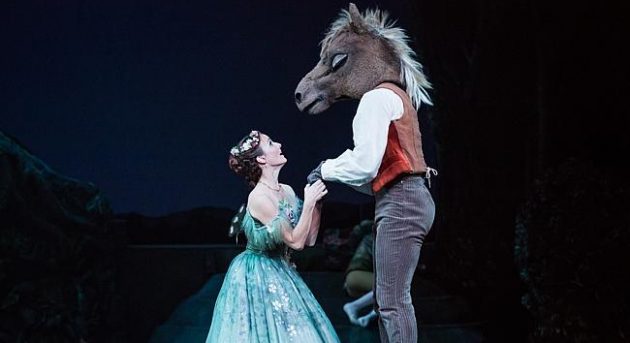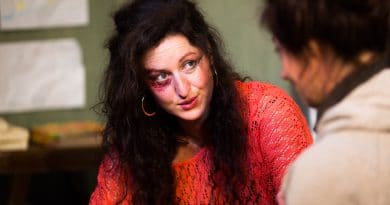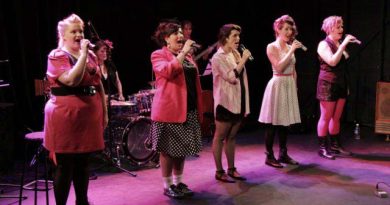Review: The Dream — The Australian Ballet
The Dream, The Australian Ballet’s current instalment in its year of beauty, is a triple bill that slowly loosens and elongates until it reaches the eponymous ballet, with its familiar story ballet structure and playful but demanding technique. It’s a tribute to Frederick Ashton, and it’s a rewarding one.
We begin with Monotones II, Ashton’s short 1965 piece that tips its hat to space travel. The costumes are white bodysuits and caps, the technique brings out in the dancers more stiff and controlled shapes, particularly in the arms, and it’s a jolt of creativity to wake you up and bring you into Ashton’s world. Set to Erik Satie’s Trois Gynopédies, it’s a soaring, curious piece, settling itself amongst the stars, conjuring our sense of wonder through carefully tumbled lifts. Performances on opening night felt slightly unfinished, ideas brought to the stage not fully fleshed out – an afterthought with a leg or an arm – but the dancers, Natsaha Kusen, Brett Simon, and Jared Wright, were eminently watchable.
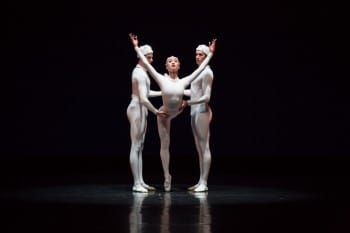
Symphonic Variations follows, a romantic, vital piece for six, with costumes summoning something vaguely Greek, echoing an ancient classicism of movement; Robyn Hendricks, Cristiano Martino, Amber Scott, Brett Chynoweth, Christopher Rodgers-Wilson, and Ako Kondo (who is newly promoted to principal dancer) lift and carry each other, surrender to each other, rising and falling, coming together and retreating, to César Franck’s composition of the same name.
It’s a dreamy piece, so it’s only fitting that it sits between Monotones II, a dream of the future, and The Dream, the which is an experience of nothing if not the quintessential magic of dreaming. As enjoyable as the first two pieces are, the energy and performance isn’t as strong as what’s to come; these two have nothing on the main event.
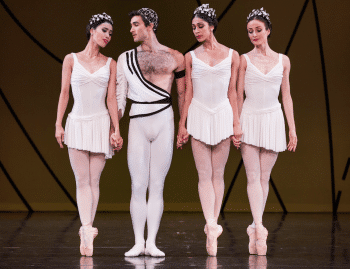
Frederick Ashton is widely considered to the father of English ballet; there’s a refined conservatism to his movements, a beautiful sense of melody that is contained at the hip and in the arms. A constrained assurance in the dancers’épaulement. If athleticism and musicality before perfect control is more American, than Ashton makes a strong case for the British.
Nothing in this triple bill is unbridled, but it’s full of passion channeled through structure, an imbuement into the steps, rather than on top of it. It’s this smart, gently romantic idealisation of ballet that is the backbone of the third and final piece, The Dream.
The Dream, an ode to Shakespeare’s A Midsummer Night’s Dream, is an English pastoral delight. The corps of fairies are a small explosion of play and joy as they clatter en pointe onstage, their mischief perfectly heralding the arrival of grand Oberon (a regal, expansive Kevin Jackson) and superior Titania (Madeleine Eastoe, tantalising and dearly missed already), the King and Queen of the fairies. Their quarreling is all fun and games until Oberon recruits Puck (the astonishingly, carelessly athletic Chengwu Guo) to meddle with the help of a magic flower’s juice.
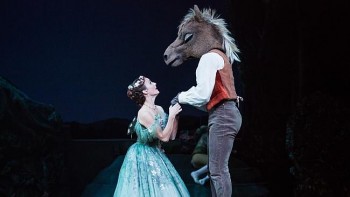
Guo charms the unsuspecting lovers that cross his path – Helena, Hermia, Demetrius, Lysander (Natasha Kusen’s Helena and Robyn Hendricks’ Hermia are the standout here, with bright, committed acting and assured technique) – and sets their comedy of errors into motion, the crease complicating this story that focuses on the creatures of the forest they visit instead of the lovers themselves. And the madness, the lovely, too-fun madness, reaches its peak when Bottom (Joseph Chapman) and his amateur players leap, boyishly slapstick, onstage: when Bottom is transformed into an ass, and Titania awakens and is besotted with him, Chapman rises en pointe, finding a pleasing, remarkable gait, a graceful vaudeville.
This is a loving, welcome tribute to a great choreographer and an exciting bill, showcasing a range of dancers and offering a challenging mix of story and movement; what a gorgeous experience.

